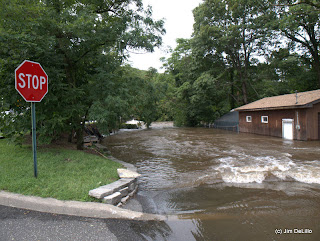Journeys of a Lifetime: 500 of the World's Greatest Trips
· Equipment
I don’t recommend that you bring a tripod unless it is a very light and mobile. Many of us will have cameras as well as binoculars. More equipment will become cumbersome and difficult to use. I am bringing a combination of walking stick and monopod. Often if your subject is an animal you will not have a lot of time to capture the image before the animal flees thus a tripod is of little use in these situations.
I don’t recommend that you bring a tripod unless it is a very light and mobile. Many of us will have cameras as well as binoculars. More equipment will become cumbersome and difficult to use. I am bringing a combination of walking stick and monopod. Often if your subject is an animal you will not have a lot of time to capture the image before the animal flees thus a tripod is of little use in these situations.
· Wildlife
When approaching animals in the wild begin taking images during the approach process since you never know at what distance the animal will flee. Take lots of images. It is easy to delete unwanted ones. It is always better to capture a shot approaching the animal rather than the animal fleeing. Zoom in as close as possible. Have your camera ready and accessible at all times. Most animals will not wait for you –Sloth excluded.
When approaching animals in the wild begin taking images during the approach process since you never know at what distance the animal will flee. Take lots of images. It is easy to delete unwanted ones. It is always better to capture a shot approaching the animal rather than the animal fleeing. Zoom in as close as possible. Have your camera ready and accessible at all times. Most animals will not wait for you –Sloth excluded.
· Composition
Include reflections in your composition. Often the reflection itself will make a good photo. If your composition is in the sun or bright light a neutral density filter or circular polarizing filter should be considered but in darker situations such as the rain forest you will not need to use a filter.
Include reflections in your composition. Often the reflection itself will make a good photo. If your composition is in the sun or bright light a neutral density filter or circular polarizing filter should be considered but in darker situations such as the rain forest you will not need to use a filter.
· How to pack
If your equipment includes many individual parts bring a small day bag or small backpack to house all the pieces that are not in use. Remember travel as light as possible. You will have a much more enjoyable trip. I would rather have the basic equipment than too much equipment.
If your equipment includes many individual parts bring a small day bag or small backpack to house all the pieces that are not in use. Remember travel as light as possible. You will have a much more enjoyable trip. I would rather have the basic equipment than too much equipment.
· Before leaving home review and study your camera manual. You should know how to operate it and that all functions are working. This is very important if you have a new camera or it’s been awhile since you used your camera. Remember we will have very limited access to any stores after we arrive in Lima
· Make sure that you pack your camera manual. Many of the new cameras do not come with the manual and if you want one you need to download the manual from the manufacturer. Many strange and unusual malfunctions have occurred in the field and the manual often will supply instruction that can correct the problem. It may mean the difference of lots of images or going home with a disappointing number. Remember most of us will not travel the Amazon again!
· Bring some type of rain protection for your camera equipment. There are specialty waterproof systems such as Aqua Tech or Kata, Inc. camera covers or you can use something as inexpensive as Ziplock bags. These bags come in sizes from 1 to 3 gallons. I once failed to use an adequate water protector in Alaska
· Bring some type of security to attach your camera to you. I know that we all want to go home with all the equipment that we started out with. A neck strap or chest harness is acceptable. Gear Keeper offers a retractable device for smaller cameras. Cotton Carrier offer several chest strap carrying systems. I do not think a wrist strap is adequate. One inexpensive solution is to tie a string or small cord to your camera and to the button hole of your shirt. Don’t think it can’t happen to you! My last trip to the Galapagos claimed one unsecured camera.















